This story was written by Brian Roach and first appeared in GardenDrum, in 2016
I feel confident anyone reading this would agree that gardeners have a better insight than most into changing weather patterns. Whatever the reason, the hot days seem to be getting hotter and the cold days colder but it’s usually the former that presents the greater challenges in selecting the right plant for the hot spot.
Enter stage right our wonderful grey-foliaged native plants.

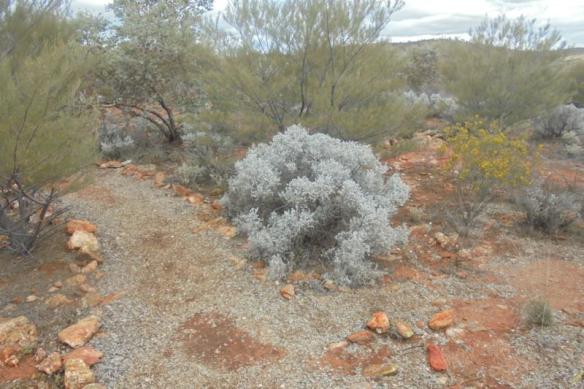
On a recent trip out through Broken Hill to the Flinders Ranges I could only look in awe at the great swathes of blue-bush, Mariana oppositifolia and M.sedifolia that adorned the hot and often rugged countryside. Obviously these plants are wonderfully adapted to a hostile landscape where water is scarce and sunshine plentiful.
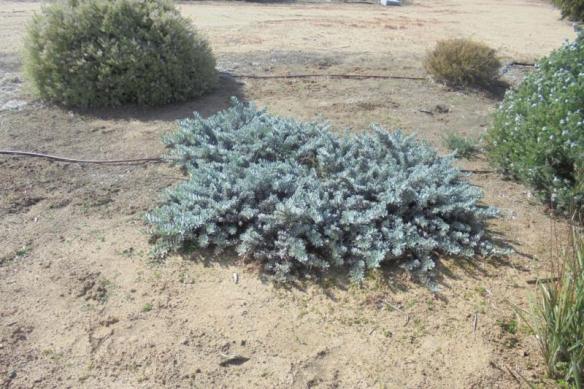
On our return trip we stopped off at the new Shearers’ Centre at Hay. It was hellishly hot but what was loving the weather in the garden was Eremophilla glabra ‘Kalbarri Carpet’. I’ve been growing this plant for a few years now and it’s as tough as old boots once established. The ochre coloured flowers contrast beautifully with the shimmering, silver foliage which seems to actually reflect the heat of the sun.
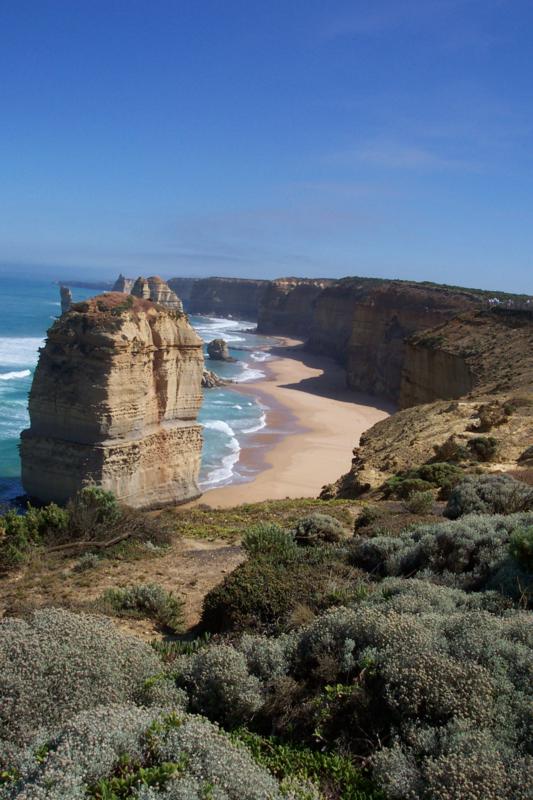
A few years earlier we drove out along the Great Ocean Road and there was Cushion Bush, or Leucophyta (formerly Calocephalus) brownii coping so well with the harsh salt-laden air and hot, sandy conditions. I was amazed at just how big these plants could grow. Unfortunately, my experience in Sydney is that these plants do not cope with our humid, summer conditions.
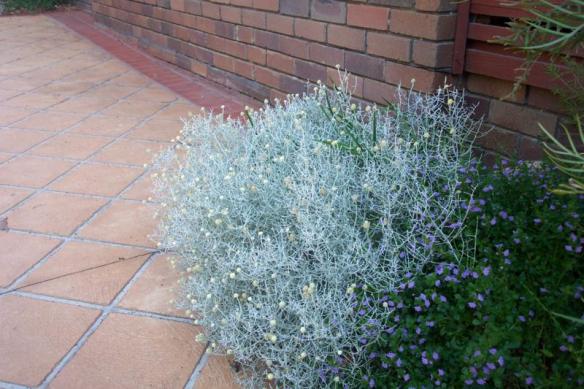
So nature has been able to work it out…so why can’t we? To coin an old racing adage, it’s all about ‘horses for courses’.
One of the very first native plants I grew around 40 years ago was Olearia phlogopappa. It was worth growing just to rattle off that wonderful name to anyone who would listen. But in recent times another Olearia with wonderful grey foliage has come into my garden.
Olearia languinosa ‘Ghost Town’ is one of those unkillable plants and thrives in a hot spot with very little demand for water. It’s low growing to around half a metre high and if left to itself, will certainly spread a couple of metres over time but it’s very amenable to severe pruning. The foliage has a delightful aroma when cut or crushed. It’s not the small, white flowers that make this plant well worth growing, but rather the silvery, grey foliage that fairly laps up the hot sun. An added bonus with this plant is that cuttings strike with ease.

A wonderful new plant was only discovered in the wild about a dozen or so years ago up around the Copeton Dam near Inverell. Members of the Grevillea Study Group were on the prowl for an elusive grevillea when they spied a stunning, yellow flowering plant. It was keyed out and found to be Homoranthus prolixus and apparently never before brought into cultivation.
It has wonderful blue/grey foliage with red stems on the new growth and stunning bright yellow flowers across the horizontal growth of the plant in late spring and early summer. Growing naturally on granite outcrops in an extreme climatic environment, this is yet another great plant to cope with our topsy-turvy climate.
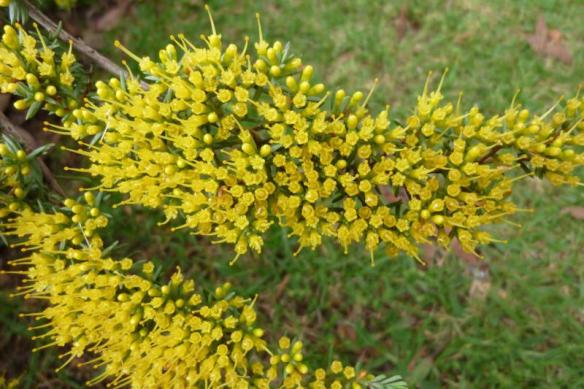
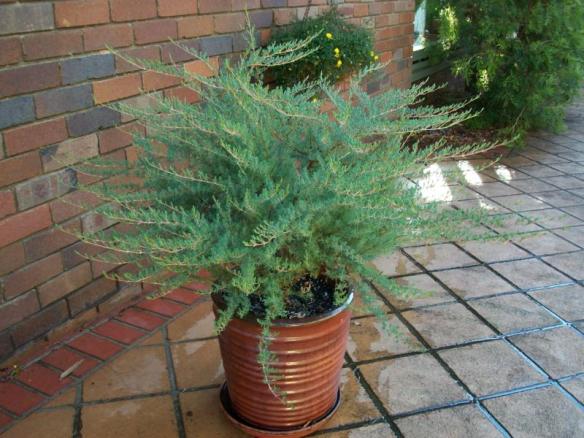
The grey, strappy Conostylis candicans has been around for quite a while but I’ve never managed to maintain one for any appreciable time. Related to the Kangaroo Paws as it is, I suspect it’s one that doesn’t enjoy our humid summers.
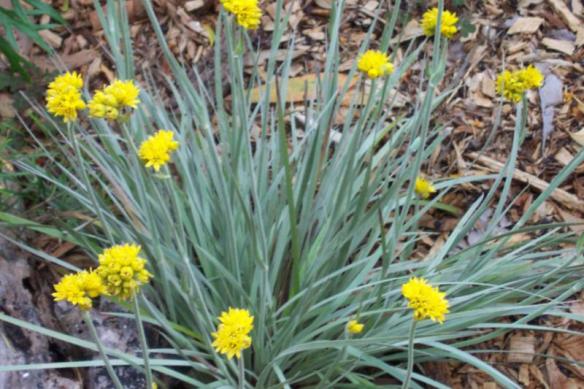
However, around 20 years ago my mate, Peter Olde, sent me some material he’d collected in WA – as he has done from time to time – and he labelled it as Conostylis aurea. I’ve been growing the plant ever since with wonderful results. It’s a low, clumping plant to around 20cm high with very grey foliage and masses of yellow flower stems from late autumn through into early spring. It really is a stunner and is as hardy as anything else in the garden. I find it strange that I’ve never seen this plant for sale in all the time since I first received it.
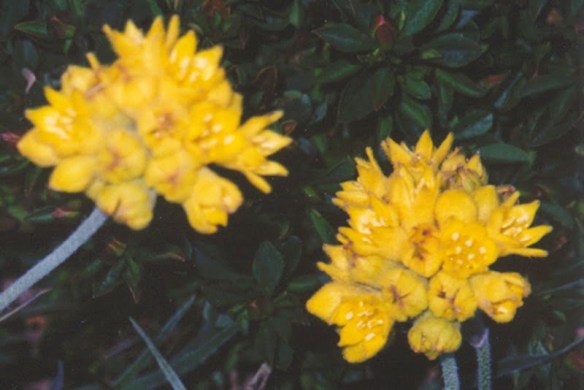
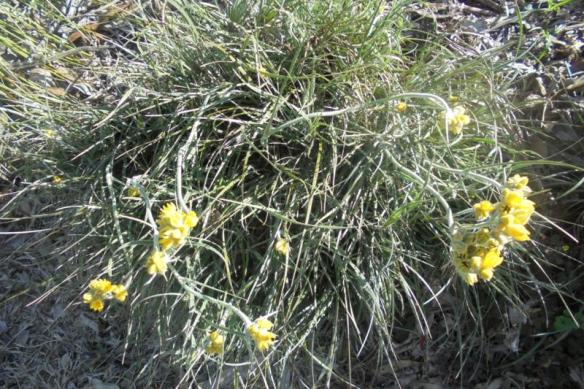
Any mention of grey-foliaged native plants would be remiss without mentioning Actinotus helianthii, our wonderful east-coast Flannel Flower.
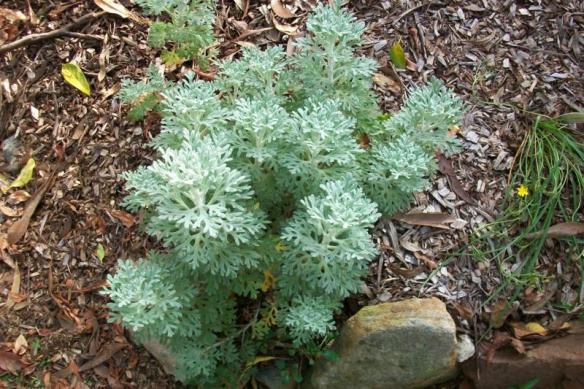
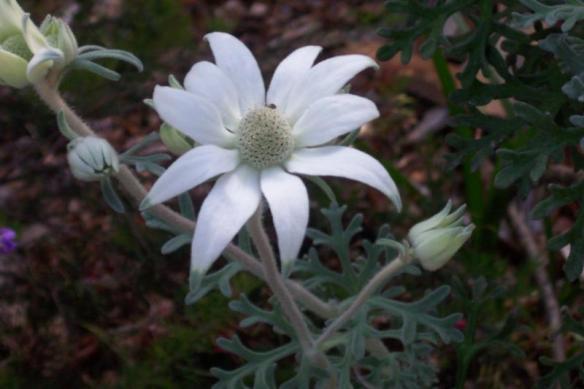
Okay, so they’re difficult to maintain in the garden for more than a couple of years, but ain’t it worth it! With a bit of luck there’ll be a bit of self-seeding, especially if you pluck off the dying flower heads and sprinkle the seed about.
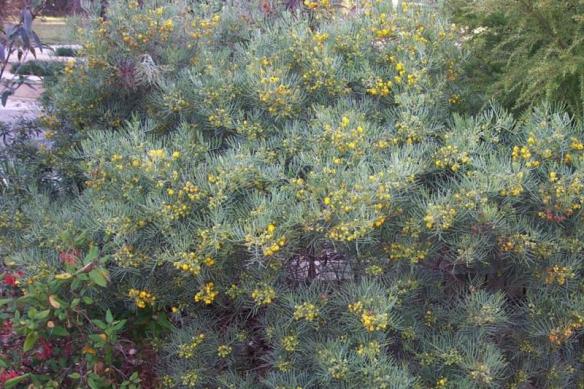
But if I had to pick my favourite on the basis of toughness and display in my Sydney garden, I think I’d have to opt for Senna artemisoides. That wonderful grey, lace-like foliage is contrasted so stunningly by the bright yellow pea-flowers. And again, let the seed pods develop and lots of little babies are sure to put up their hands to be dug up and potted on. And don’t be frightened to cut it back quite heavily after flowering to maintain a dense plant as shown in this photos.
So let’s hear it for Amazing Greys – how sweet the ground that sees a stretch of these.
